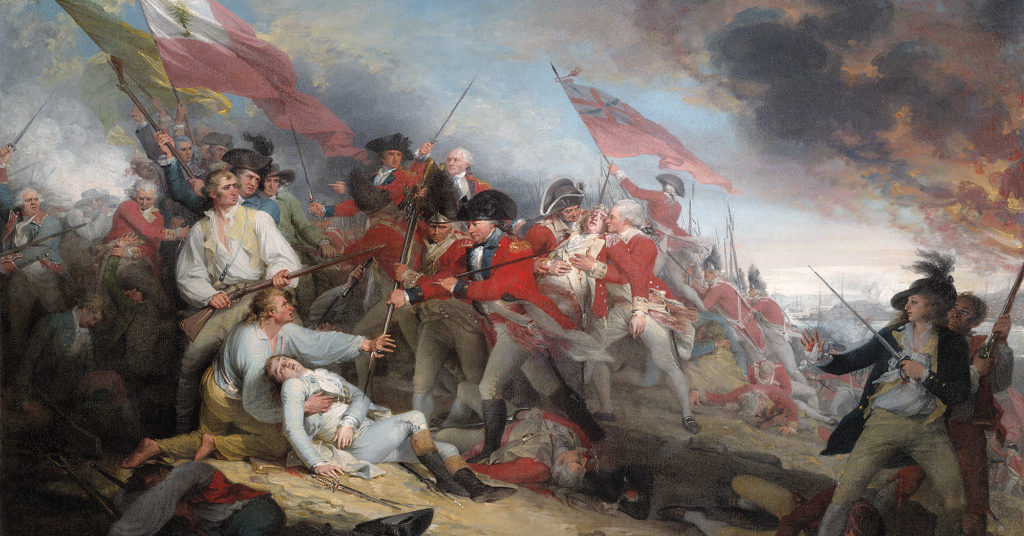By John Dedes,
What Do the Atlantic and Canadian Colonies Reveal for British Dominance?
One of the most significant periods in the history of North America was the Interwar Period of the 18th century, between the “Seven Years’ War” (1756-1763) and the American Revolution or “War of Independence” (1775-1783).
What we need to understand, however, is how this 12-year period affected the British interests and the Canadian influence on the continent.
The text focuses on the Atlantic colonies of the New World at the time, the way Canadas were developed and how the two wars, before and after, harmed or benefited the communities of North America.
Nova Scotia and Loyalist Influence
One of the most important interwar colonies was Greater Nova Scotia. In 1764 and before the conflict, there were about 13.000 people there but the pattern of loyalists changed and more than 30,000 people arrived there, due to the neutral stance of the colony in the war.
The particular focus of the colony was the Saint John River Valley and that’s because there weren’t any strong prohibitions for the Loyalists’ life there.
The loyalists of this territory, after feeling distant from the people in Halifax requested the partition of Nova Scotia around 1784, when a new capital was introduced for Brunswick.

The people from the Wabanaki Confederacy, who started living there, did not have any issues until they developed ideas of pro-catholicism and came into ideological conflicts with the people of Fredericton and Halifax, who were strongly anti-Catholic.
Prince Edward Island and British Dominance
Another big and important colony was Prince Edward Island, a place where more than 5,000 Acadians moved into, coming from Nova Scotia in 1755, avoiding any conflict and war.
However, after the beginning of the Seven Years’ War, nearly 1,000 deportees and refugees died on their way to France at the end of the 1770s.
The model which was followed after the establishment of the number of refugee populations consisted of an agricultural colony, which was influenced by a part of the feudal and tenant-farmer policy.
The lack of interest for settlers urged the landlords to sometimes abandon their obligations to the colony.
The Escheat Party, which was strongly opposed to this system, caught the attention of the British, and two years before the end of the century, they changed the colony to the name which is stated above and managed to develop strong financial links.
Newfoundland and Indigenous Extinction
The story of Newfoundland is very different from the aforementioned colonies and it started with the American privateers who wanted to apply their influence and hurt the British economy by establishing the strongest economy at this stage.
That is why the population of the colony was mostly transient fishermen who wanted to work with European fleets and build their wealth around the abundance of COD fishery.
The Newfoundland residents found their stability, however, around the mid-1760s. The fact that the Newfoundland residents would be able to use their resources privately and in a bigger share for everyone living there was something that didn’t matter when they understood the effects of the lack of a governmental elective force.
The elite assembly was organized by the St.John’s merchants who were only protestants and paid great attention to educational development, feministic involvement, and financial expansion.
Not much attention was paid to the environmental aspect and that is why the deforestation for the use of lumber and fuel reduced the indigenous acmes to traditional resources.
Tuberculosis was the main disease for the people who lived in the territory. At the beginning of the 19th century, after some sexual relationships between Beothuk women and European men transmitted this disease, by 1830, the whole Algonquian-speaking group went extinct.
The fact that such a historic group, which was the first to encounter the Europeans on this continent, went extinct in such a shameful action foreshadows what was the destiny of the rest of the North American indigenous groups.
British Response and Quebec Act
In 1791, the terms of the Quebec Act were replaced by new ones under the Constitutional Act which was more radical and determined the two main territorial parts of Canada.
The main reasons for the English settlers doing this were four, primarily, as analyzed in Belshaw’s Book for North America before the Confederation (cited below and the main source of the article):
- Establishing a consistent administration in each of the colonies of British North America
- Ensure the power of elected representatives and officials in legislation while forming a parliamentary government loyal to the Crown
- Reducing imperial costs as a means for local governments to raise funds for local projects
- Organizing the two parts of Canada separately; Lower Canada was the French and Catholic territory while Upper Canada was of English and Protestant character.

Issues with Application
There was also a representation of the English church in the Lower part of Canada and some French schemes in the organization of society would also apply to Upper Canada.
The laws for women had many prohibitions on their rights in Upper Canada while these barriers didn’t apply in the Lower regions.
Many people started disregarding the Constitutional Act and supported that it mainly favored the British. Even in the Lower part of Canada, the anglophone merchants from Montreal had found a way to be more privileged than the rest of the people in the region.
Upper Canada and American Benefit
In Upper Canada, the changes in the Acts managed to make more and more indigenous people change their settlements and communities such as the Mohawk or the Anishinaabeg people while there was an issue with the communication between these groups and the British-Canadian officials since there were issues with written arrangements and uncertainties.
The actions of land clearing and organization have been a vital characteristic of the intensifying settlement of British Canadians and this came in accordance with the fact that officers of the English forces could claim bigger parts of the land and were expected to get better locations for clearing.
The population of Upper Canada was growing at a constantly higher rate and the main component of 25,000 people in this territory were the Late Loyalists.
By 1800, the British felt the need of supporting these communities and that is why their faith in the economic expansion of the community was beneficial for the people of the Thirteen Colonies.
The Napoleonic Wars created new demand for wheat and that is another factor that boosted the colonies’ economies at the beginning of the century, mainly through the importance of family farming.
This social organization started off being a positive aspect towards productivity but it quickly became a concern for the education of the children in these families. It stayed a concern since the main schools were private and progress came through difficulties for most of the families.
American Revolution Doesn’t Help Lower Canada
After the American Revolution confirmed that the status of Quebec would be as a British province, the Constitutional Act did further damage by also restricting Lower Canada to the St. Lawrence valley.
In Lower Canada, the role of Montreal changed, since much of its territory started being part of Upper English Canada and this is what the people referred to when they said that the whole scheme was serving the British interests.
Most of the loyalist communities in Lower Canada were dependent on Montreal and they all benefited from the Post-Revolutionary War boom in British shipbuilding and shipping.
Lower Canada provided more of the resources for new settlements to the east and the west while the growth of the population was significant since in the countryside and in the towns there was a 50% increase combined.
Depletion of Canadian Resources
That is when the main issue of low capacity of land became a serious problem and this wasn’t only caused by the increase in the population but also by the urge of British and British American settlers to be freeholders.
The effects of this issue were tragic and in the St.Lawrence valley by 1791, the trees were so few that could even be counted with the “naked eye”.
Wildlife was also depleted and the lack of sustainable development in nature contributed to unsustainable raising in poor families.
There was also a problematic change for the fur trading system since by 1800, outright fur trade warfare was an issue along with the redirection of Canadian labor from farms to forests and the new farming market of British North America, which captured the attention of most of the traders.
Concluding Remarks?
The Interwar did not play a huge role in the further empowerment of the British; the effects were not only beneficial after a crucial dominance in the Seven Years’ War.
After the war, it was Britain’s time to shine as the world’s biggest colonial power.
However, the fact that the British were successful in their expansion in North American territories belonged, once the Thirteen Colonies started gaining influence and the American Revolution or War of Independence (1775-1783) took place.
The change in the territorial borders of the British power would be mandatory. Some arguments show this period was a significant blow for power and the beginning of the end for dreams of fully conquering the New World.
References
- The fight for the ’14th colony’, Nova Scotia, historynet.com, Available here
- Québec Act (page 3), ville.montreal.qc.ca, Available here
- Canada in the World Wars and Interwar Years, wikipedia.org, Available here
- Canada – The interwar wars, britannica.com, Available here




